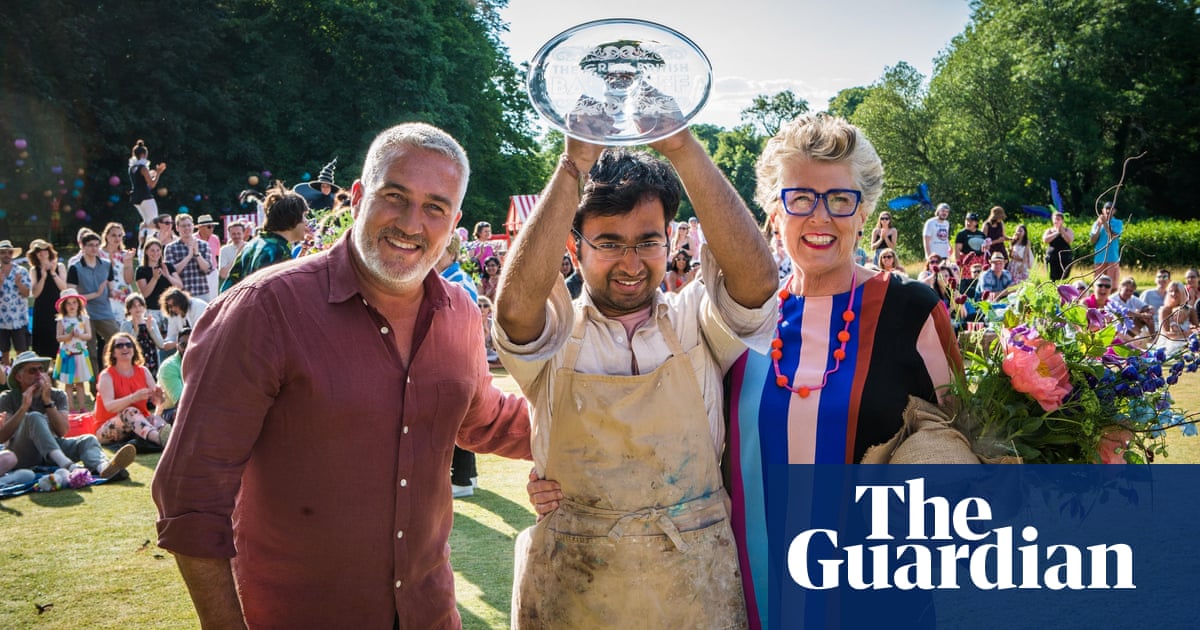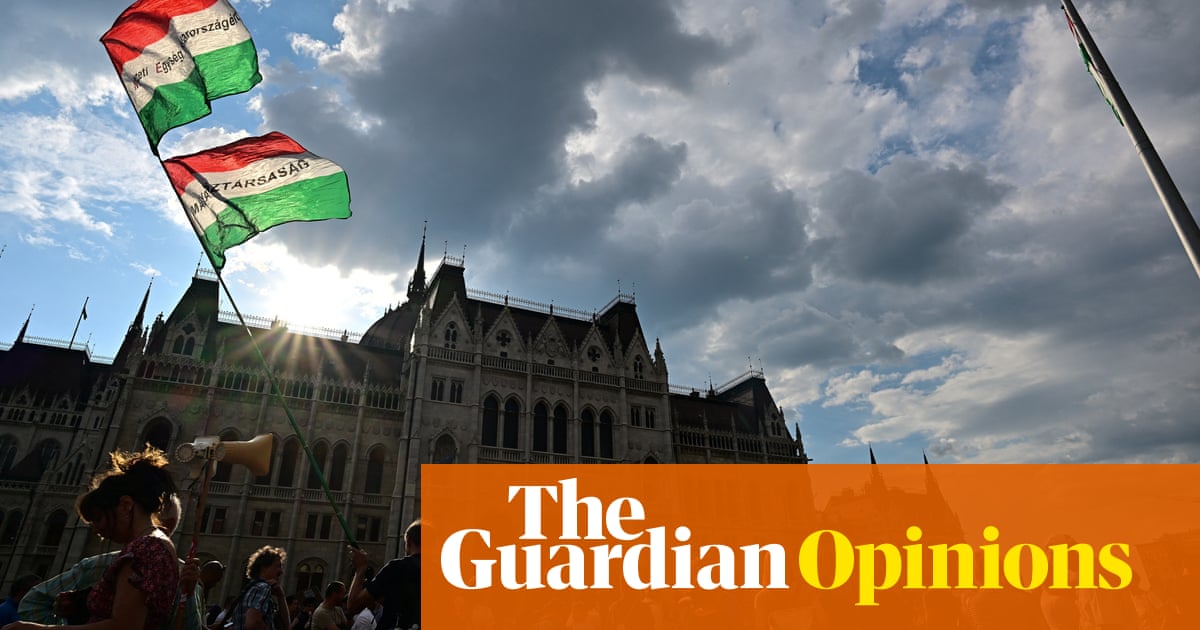
There is a frequent complaint from the right that that the deep-rooted ideological position of the BBC, universities, theatres, museums and other arts and cultural organisations is a long-uncontested leftiness.
The paranoia about this is extreme: consider that the prime minister, Liz Truss, complained to the journalist Tom Newton Dunn during a party leadership hustings that he had framed a question “in a leftwing way”. The sheer insanity here – though her words were doubtless carefully chosen to seed distrust in the media in general – is that Newton Dunn is the former longstanding political editor of the Sun, and not notorious for his raging socialism.
The Tories’ fightback against this supposed hegemony of “cultural Marxism” (purely imagined, given the actual small-c conservatism of so many British cultural institutions) has been waged in all kinds of high-profile ways, notably through appointing ideological fellow travellers to the (in theory) politically independent boards of national cultural organisations, and purging those seen as dissenters. See Tory donor Richard Sharp, now chair of the BBC. See Aminul Hoque, an academic who occasionally expressed views not wholly supportive of the British empire’s every last move, who was removed as a trustee of the Royal Museums Greenwich.
But a quieter, more subtle – and perhaps, in the end, more effective – rightwing revolution has been in progress for years. This has not been the bombastic culture war pursued by the former culture secretary Oliver Dowden. This has been something much more insidious and far-reaching, and it relates not to about how people think but about the fundamentals of how many cultural organisations are run.
The change is the result of what happens when you radically reduce the public stake in the arts. For many cultural organisations, the Arts Council or their local authority is often no longer the major funder – and as a result, the taxpayer is no longer the ultimate stakeholder. The balance has shifted fundamentally. “For years I thought I worked in the public sector,” one director of a gallery told me. “Then I realised that I worked for a charity to which the government is just a minority donor.”
The real author of this neoliberal shift is no culture warrior, and he’s now the chair of the British Museum: George Osborne. Under his 2010 austerity measures, with Jeremy Hunt as culture secretary, Arts Council England was cut by 30% – hugely significant for the cultural organisations on the receiving end, and yet a risible figure saved for the exchequer (the projection at the time was £457m over four years – absurdly and tragically just one-third of 1% of the government’s intended budget saving).
The arts in England have been on standstill funding ever since, which in real terms comes in at somewhere between a 30% and 50% cut over the past decade; and local authorities, also hit hard by austerity measures and then by the pandemic, have very often cut their funding too. Arts organisations have since been forced to look elsewhere for money, and have got much better at being commercial bodies: at creating a great shop and cafe; at hiring themselves out for events; or, like the Hepworth in Wakefield, charging those outside their local authority area for entry. Newer institutions put this commercial side of their existence firmly into their plans: the freshly redeveloped Museum of Making in Derby, for instance, has a huge groundfloor space designed for hires from local businesses such as Rolls-Royce.
And then there is the fundraising, from charitable trusts, often run by extremely wealthy individuals (media executive Elisabeth Murdoch is one relatively new player on this scene), or from high-net-worth individuals themselves. I vividly remember one director of a public gallery, off-guard one night at the Venice Biennale, telling me how they had gone into working in museums and galleries to change the lives of kids in the deprived parts of their city – not to spend so much of their working life smilingly handing glasses of champagne to very rich people who might, or indeed might very well not, be minded to contribute to renovating the gallery.
This is privatisation. No one uses this term to describe what’s happening in the arts, but it’s not so different from the stealthy privatisation that’s unfolding in the another field established in its current form after the second world war – healthcare. For the NHS, privatisation involves contracting out services and selling GP practices to US conglomerates. The means in the arts may be different, but the trend away from the public realm is just the same. In the maniacally tax-cutting world of Trussonomics, it’s likely to happen even faster.
You might wonder whether it actually matters. Being forced to raise revenue from shops and cafes and rich people often makes institutions more fun to be in than the slightly dowdy civic museum of previous decades – who doesn’t enjoy a nice cafe, a nice shop? Most people who work in such organisations would passionately argue that just because there is less reliance on the public purse, it doesn’t mean that they feel an iota less responsibility to the public, less desire to reach as broad an audience as they possibly can, less desire to change lives for the better – just as NHS healthcare workers are still passionately devoted to doing their absolute best for their patients.
But there is a difference, subtle as it may seem from the outside. It’s to do with to whom institutions are accountable. It’s about hierarchies and power. (Are you a “friend”, with “friends’ room” privileges? Are you a donor towards whose priorities or whims the gallery has felt it necessary to adjust its programme? Have you effectively bought a seat on the board, which will allow you to help set the direction of the organisation?).
It’s also to do with the moral and practical problems that set in when money an organisation has been obliged to seek is widely seen as tainted. Exhibit A would be the scandal around the owners of Perdue Pharma, producer of the opioid painkiller OxyContin. Tate said in 2019: “We do not think it right to seek or accept further donations from the Sackler family.” But it had already pocketed a great deal from Perdue over the decades, and couldn’t in a million years pay it back.
You know those little well-kept parks that developers sometimes have to provide as part of their deal with the local authority? They are often better looked after than public parks, with better planting. Their grass is still freshly green even in a drought, and skilled gardeners keep them looking spruce. There are no chewing-gum stains on its paths. These places are public, in a way – in that you can go there and eat your lunch on the grass, no problem (though you’d certainly get moved on if you were homeless and tried to sleep there). But the fact is, you, the ordinary citizen, do not own this park. And on some absolutely fundamental, cellular level, you can feel that you don’t.
Charlotte Higgins is the Guardian’s chief culture writer












